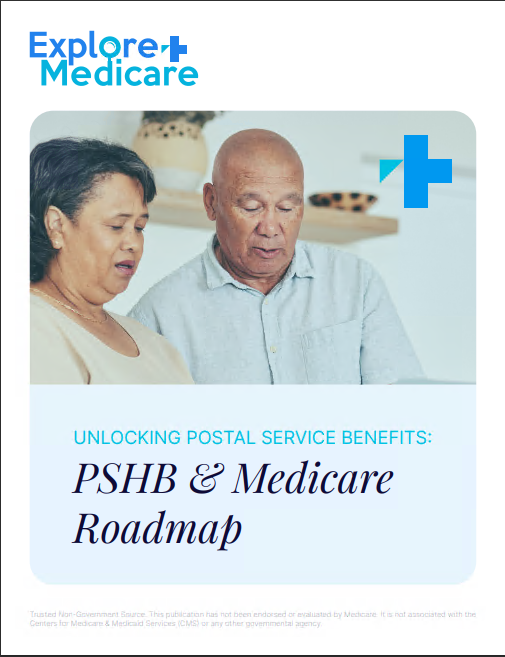Key Takeaways
-
Medicare isn’t just for individuals 65 and older; it also covers people under 65 who meet specific criteria.
-
Understanding who qualifies and how benefits work can help you or a loved one gain access to vital healthcare services.
Why the Medicare Conversation Needs to Be Broader
When you think of Medicare, you likely imagine retirees settling into their later years. While that’s a key group covered by the program, it’s far from the full picture. In 2025, Medicare remains a critical healthcare resource not only for seniors but also for millions of younger Americans who qualify due to disability or specific health conditions.
Failing to recognize this wider scope could mean missing out on coverage options, resources, or benefits you or someone in your family may be eligible to receive. It’s worth taking a closer look at what Medicare truly offers and to whom.
Who Qualifies for Medicare Before Age 65?
While most people qualify for Medicare at age 65, there are several scenarios where individuals under 65 are eligible:
Disability-Based Eligibility
If you have received Social Security Disability Insurance (SSDI) benefits for 24 months, you automatically qualify for Medicare, regardless of your age.
-
This includes individuals with conditions that limit their ability to work.
-
The 24-month waiting period begins from the time you start receiving SSDI benefits.
End-Stage Renal Disease (ESRD)
Individuals with permanent kidney failure who require dialysis or a kidney transplant may qualify for Medicare, no matter their age.
-
Medicare can begin as early as the first month of dialysis if certain conditions are met.
-
Coverage may also start the month of a kidney transplant or two months prior in specific cases.
Amyotrophic Lateral Sclerosis (ALS)
If you’re diagnosed with ALS, you become eligible for Medicare immediately after your SSDI benefits begin.
-
There is no 24-month waiting period in this case.
Parts of Medicare That Apply to Everyone
Whether you’re 28 or 82, once you qualify for Medicare, the program’s structure remains consistent. It includes several components:
Medicare Part A (Hospital Insurance)
-
Covers inpatient care in hospitals.
-
Also helps with skilled nursing facility care, hospice, and some home health services.
-
Most people don’t pay a monthly premium for Part A if they or a spouse paid Medicare taxes long enough (at least 10 years).
Medicare Part B (Medical Insurance)
-
Covers outpatient care, doctor visits, preventive services, and some home health care.
-
There is a monthly premium, which in 2025 starts at $185 for most people.
-
Higher-income individuals may pay more due to income-related adjustments.
Medicare Part D (Prescription Drug Coverage)
-
Helps cover the cost of prescription medications.
-
Offered through private insurance companies approved by Medicare.
-
Monthly premiums and costs vary by plan.
Medicare Advantage (Part C)
-
An alternative to Original Medicare, combining Parts A and B and often Part D.
-
Includes additional services but may have limited networks and different cost-sharing.
-
Offered through private insurance companies under Medicare guidelines.
How Coverage Differs for Younger Beneficiaries
Even though younger individuals under 65 receive the same core benefits as those over 65, some key differences apply:
-
Fewer Medicare Advantage and Part D plans may be available in certain areas for people under 65.
-
Premiums and cost-sharing structures can vary and sometimes be higher.
-
Supplemental coverage (like Medigap) might be harder to access in some states for people under 65.
These differences are important when planning for long-term care and budgeting, especially if you’re living with a chronic condition or permanent disability.
Important Timelines for Medicare Enrollment
Just like seniors, younger individuals who qualify for Medicare also face specific enrollment windows. Missing these deadlines can lead to delayed coverage or penalties.
Initial Enrollment Period (IEP)
-
Begins three months before your 25th month of receiving SSDI and ends three months after.
-
This is your first opportunity to enroll in Medicare Parts A and B.
Special Enrollment Period (SEP)
-
You may qualify for a Special Enrollment Period if you delay enrollment due to having employer coverage or experience other qualifying events.
Annual Enrollment Period (AEP)
-
Runs from October 15 to December 7 every year.
-
Allows changes to your Part D or Medicare Advantage coverage.
General Enrollment Period (GEP)
-
Held January 1 to March 31 if you missed your IEP.
-
Coverage starts the month after enrollment.
Understanding these timelines is vital to avoid coverage gaps and late penalties.
Why Younger Medicare Beneficiaries Often Need More Support
Navigating Medicare can already feel complex, and for younger enrollees, it can be even more challenging. Here’s why:
-
Many younger individuals are managing chronic or complex health needs.
-
They may be unfamiliar with Medicare’s rules, especially if they qualified due to a sudden illness or accident.
-
They often need to coordinate care across multiple providers and services.
For these reasons, it’s essential to understand how Medicare benefits can be used effectively. This includes selecting the right combination of coverage, managing costs, and keeping track of annual changes.
Common Misunderstandings That Could Cost You
Several misconceptions surround Medicare and its availability to those under 65. Let’s clear up a few key ones:
-
Medicare is only for seniors: As we’ve covered, disability and certain conditions also qualify you.
-
You can enroll at any time: Enrollment periods are strict, and missing them can lead to late penalties or a delay in coverage.
-
All benefits are the same: While the structure of Medicare is consistent, plan access and costs may vary depending on age and state regulations.
-
Private insurance is always better: While private plans can offer additional services, they also come with their own limitations. Original Medicare might be more flexible depending on your situation.
Additional Resources Available to You
If you’re under 65 and on Medicare, or helping someone who is, there are several tools and supports available:
-
State Health Insurance Assistance Programs (SHIPs): Offer free, unbiased counseling.
-
Social Security Administration (SSA): Handles disability applications and automatic Medicare enrollment.
-
Medicare.gov: Useful for finding plans and understanding coverage.
Although these resources are available, navigating them can still be overwhelming without professional help.
Medicare Isn’t Just About Age, It’s About Eligibility
If you or someone you know has been told they might be too young for Medicare, it’s worth looking again. Whether due to a chronic illness, disability, or specific health condition like ALS or ESRD, Medicare is not just a retirement benefit—it’s a healthcare lifeline.
Knowing what to expect, when to enroll, and how to structure your coverage can save you time, stress, and money. It also ensures you receive the care you need to manage your health effectively.
You don’t have to figure it out alone. Get in touch with a licensed agent listed on this website to walk through your options and make a decision that fits your healthcare needs.









